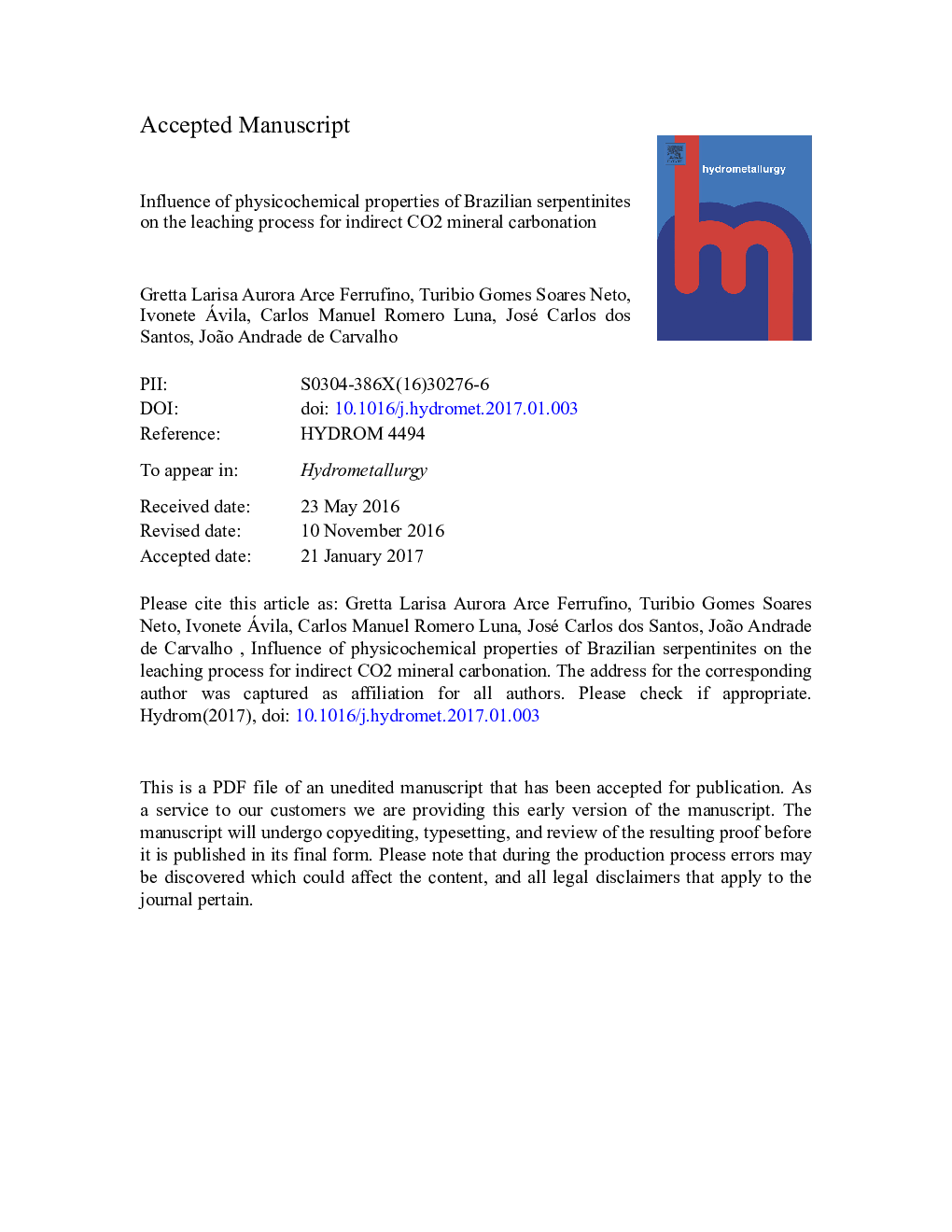| Article ID | Journal | Published Year | Pages | File Type |
|---|---|---|---|---|
| 4769320 | Hydrometallurgy | 2017 | 47 Pages |
Abstract
pH-swing mineral carbonation is kinetically favorable and requires a short reaction time. It must also obtain a high extraction rate for reactive elements in the leaching process. The main purpose of this study is to investigate the behavior of different serpentinite rocks in the leaching processes; the reactivity of Brazilian serpentinite rocks (such as: S-GO and S-MG) is analyzed based on physicochemical properties in order to understand their relationship to leaching efficiency. Surface area-to-volume ratio (SBET/Vp) and metals-to-silicon ratio (Σ(Mg, Ca)/Si) were used to measure reactivity. Leaching was carried out to determine Mg and Fe extraction. Reaction conditions for both serpentinite rocks were: 355-250 μm particle size, 4 M HCl concentration, 100 °C, and 2 h of reaction time. Characterization results show that both serpentinite rocks (S-GO and S-MG) have high magnesium (Mg) content. SBET/Vp was 36 for S-GO and 29 for S-MG, while Σ(Mg, Ca)/Si was 2.64 for S-GO and 1.20 for S-MG. These results suggest that S-GO is approximately 50% more reactive than S-MG, and that S-MG is limited by low accessible surface (SBET/Vp) and the high mineralogical complexity (Σ(Mg, Ca)/Si). Leaching results confirmed the reactivity; Mg and Fe extraction from S-GO was 94 ± 1%. However, results for S-MG were 34% for Mg and 60% for Fe. In order to increase the reactivity of S-MG, particle size was reduced to 75-63 μm. Even though S-MG was mechanically activated, Mg and Fe extraction has not increased significantly.
Related Topics
Physical Sciences and Engineering
Chemical Engineering
Chemical Engineering (General)
Authors
Gretta L.A.F. Arce, Turibio G.S. Neto, I. Ávila, Carlos M.R. Luna, José C. dos Santos, João A. Jr,
